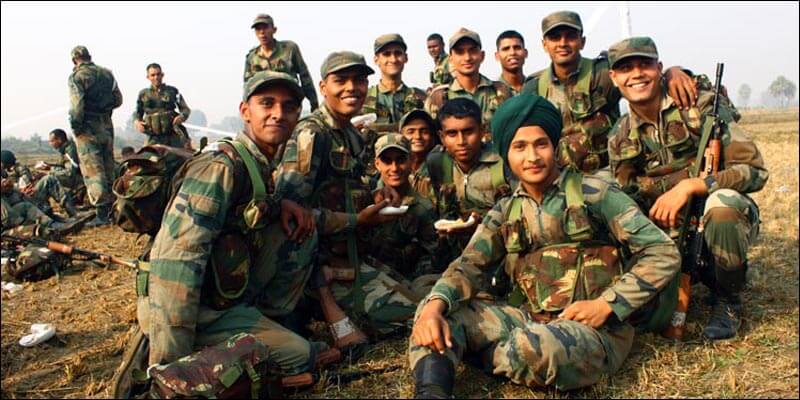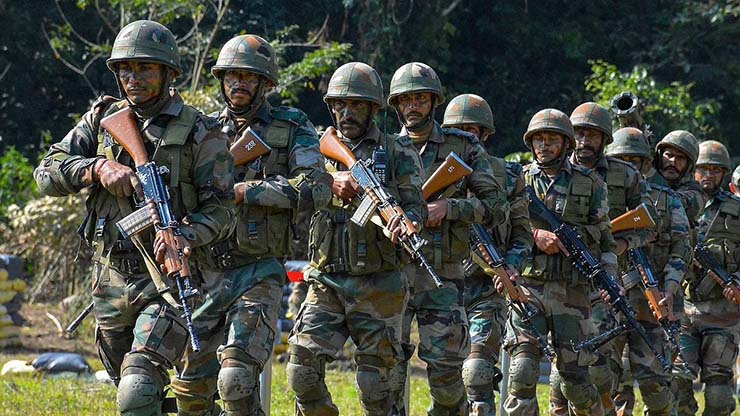
The rapid transformation in society, geopolitics and the character of war will require a deeper understanding of the larger construct of warfare. Legacy structures, processes and doctrines are increasingly at odds with emerging realities. The fact is defence forces are conservative by nature, status quo by culture and thus guilty of preparing for not only the last war but the wrong war. Thus warfare evolves faster than warfighters. Militaries need to think beyond doctrinal updates, techno-savvy silver bullets and operational quick fixes to empower human capital and fundamentally change its strategic and organisational culture. Thus holistic transformation is the need of the hour which is professionally driven and not externally abetted with hidden agendas. Military transformation to be sustainable must address all three critical components; transformed politico-military culture, transformed defence planning process and transformed joint service capabilities.
Military transformation and reforms are a sign of the vibrancy of the organization. Its prime focus must result in a higher level of operational readiness (a factor of operational preparedness plus operational effectiveness) under the overarching umbrella of national security strategy. This is the missing link which needs soul searching. The threat remains when the military transformation is driven by political agendas blunting the cutting edge of warfighters. The politicization of the military and militarization of politics are both dangerous power plays for a nation. Floundering the human domain of conflict and disconnect with the cutting edge can lead to snatching defeat from the jaws of victory.
Clausewitz rightly said that war is “a continuation of politics by other means.” Yet warfare is the domain of warfighters and not politicians and bureaucrats who have little understanding of matters military. Any military transformation must be driven by the military and empowered by the polity and not vice versa. Military transformation must empower warfighting and be the soul of warfighters. The art of war centers around a ‘clash of wills, not just clash of machines’, in which intellectual and motivational combat overmatch matters. This is not to underscore the importance of the science of war and technology. Yet in the end, the intangibles of willpower, morale, fighting skill, and unit cohesion, far more than technology, will determine the victor from the vanquished. The battles of Saragarhi 1897, Zojila 1948, Razang La 1962, Longewala 1971, Kargil 1999 and Galwan 2020 stand testimony to the role of junior leadership, unit as the most critical building block and camaraderie in adversity. All these require long-term investment in human capital and are imbibed not by quick fixes. The ongoing conflict in Ukraine has also highlighted the importance of well-trained, motivated regular forces in war and the vulnerabilities of conscripts in battle zones. It is in this context we need to do some soul searching on the recent Government driven military reforms like the Tour on Duty.

The ‘Tour on Duty’ reform is past the discussion stage of its merit/demerits with the decision already taken and announced to the nation. There are some realities which cannot be wished away by emotional outbursts on Twitter or electronic media. The announcement by Defence Minister with the three Chiefs in attendance is a testimony of acceptance by the uniformed fraternity. It must be respected without controversy. Unlike farmer agitation which resulted in pull back of reforms, a disciplined force will not, must not and shall never show resentment in such a manner. So the reform is here to stay. Veteran voices have their limits unless the former Chiefs and Army Commanders with the moral high ground had written or sought a meeting with the Supreme Commander (President), Prime Minister and Defence Minister on the matter. Interviews, webinars and decibel discords on TV have only USP value. Further, the reform impacts the society and its youth at large besides the armed forces and thus its after-effects will be widespread beyond defence.
The moral fibre of those politicians and bureaucrats who seem most enthusiastic will be judged by the number of kith and kin who join this scheme! Their present record even in the regular schemes for All ranks is rather shoddy. The timing of the reform also presents both an opportunity and a threat with both the external and internal fronts in turbulence. The reform must be tested in these adverse circumstances with full accountability and responsibility for its outcome by those who proposed and supported it.
Tour on Duty now requires realistic implementation and dispassionate validation on the ground. The hidden vote bank politics and penny-wise pound foolish approach apart, the focus must now remain on its implementation without diluting the cutting edge. It is here that the defence forces must step in with the high moral ground. The Commanding Officers called ‘Demi-Gods’ by Late Gen Bipin Joshi, Former Chief, highlighted the importance of the last direct command at a unit level. This must never be diluted. Unit Commanders with Agniveers must dispassionately without fear or favour encourage those who show motivation and weed out those who show resentment. Meritocracy must prevail over mediocrity. Agniveers must not be differentiated from tasks given to regular soldiers or be sheltered. Senior leadership must empathetically oversee this as there would be a tendency to keep them in the background in the apprehension of unit izzat taking a beating. A dispassionate SWOT of the reform, truthful appraisal of the Agniveers and refinement of the reforms must be part of the implementation and way ahead. Besides, post the first 75% being weeded out after 4 years of tenure, their employment and fallout in the society must be measured in a ‘womb to tomb’ concept.
To conclude, a soldier’s greatest pride is his uniform, his home the unit and his family the forces. On joining a soldier writes a blank cheque payable to the tricolour for an amount up to and including his life with no expiry date. His DNA lies in the 5 C‘s – Character, Competence, Commitment, Courage and Camaraderie. Unit Naam, Namak and Nishan are qualities which give him the courage to even challenge death. This lexicon of a soldier must never be politicised or compromised for a few pennies more. A nation is as strong as its defence forces which will in turn empower its diplomacy and development. This institution needs handling with care and due sensitivity and is best left to those who understand it and have firsthand ground experience. Reforms are a must but must be test bedded for wider acceptability and should empower the warfighter. It is here that military reforms require some soul searching.
-The author is a PVSM, AVSM, VSM has had an illustrious career spanning nearly four decades. A distinguished Armoured Corps officer, he has served in various prestigious staff and command appointments including Commander Independent Armoured Brigade, ADG PP, GOC Armoured Division and GOC Strike 1. The officer retired as DG Mechanised Forces in December 2017 during which he was the architect to initiate process for reintroduction of Light Tank and Chairman on the study on C5ISR for Indian Army. Subsequently he was Consultant MoD/OFB from 2018 to 2020. The Officer is a reputed defence analyst, a motivational speaker and prolific writer on matters of military, defence technology and national security.The views expressed are personal and do not necessarily carry the views of Raksha Anirveda.








